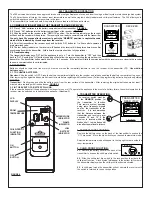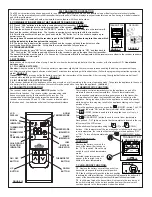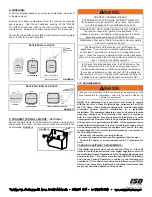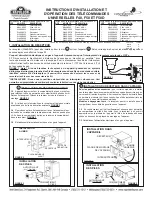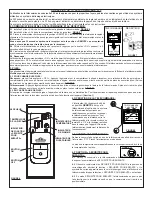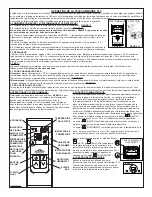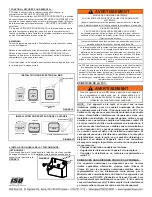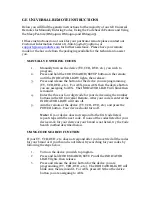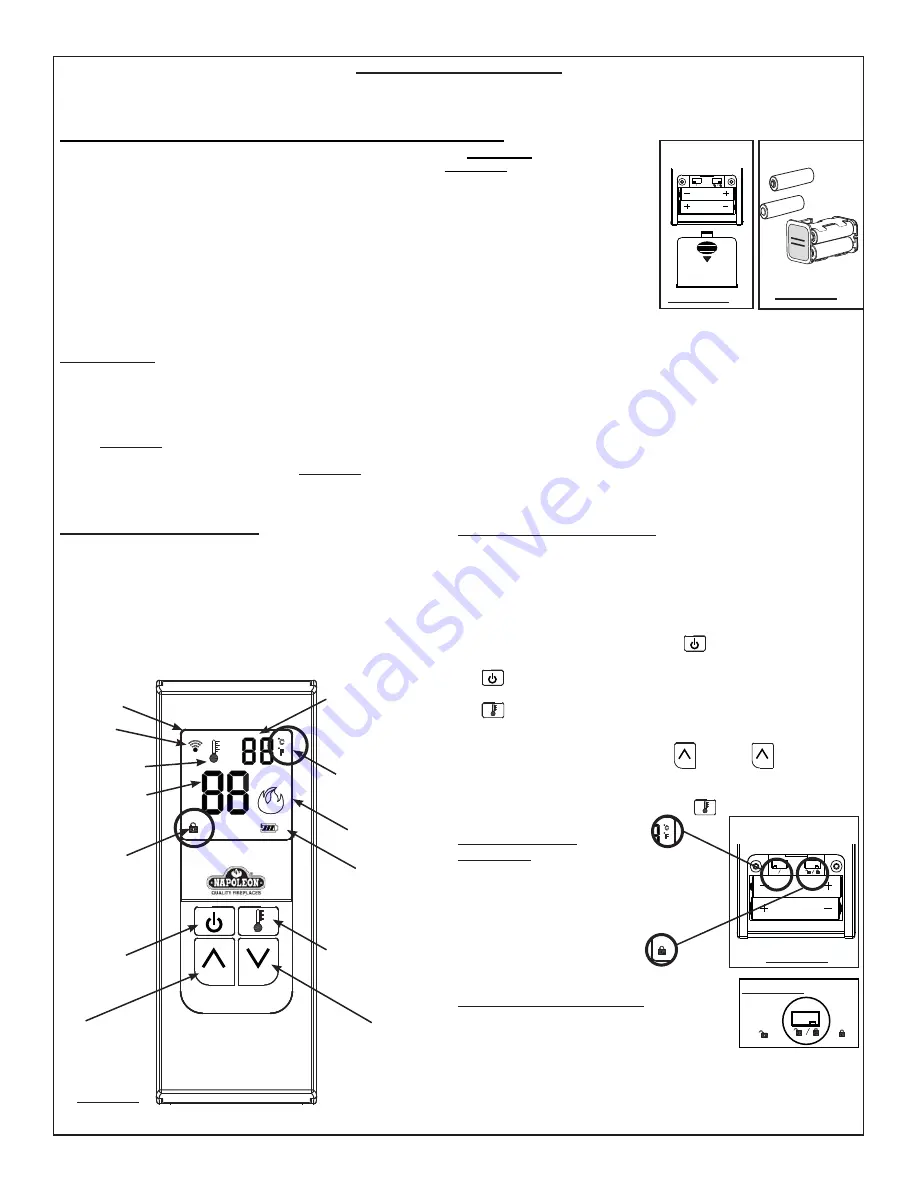
2. COMMUNICATION BETWEEN THE TRANSMITTER AND RECEIVER:
2.1
Place 2 “AAA” batteries into the battery compartment of the transmitter.
FIGURE 11
2.2
Place 4 “AA” batteries into the battery compartment of the receiver.
FIGURE 12
2.3
Slide the switch on the receiver to the “REMOTE” position. The low battery indicator on the receiver will
fl ash and the receiver will beep twice. The receiver is now ready to communicate with the transmitter.
2.4
Point the transmitter at the receiver, push and hold the “ON” button for 1 to 2 seconds to capture a pre-
determined code.
You only have 30 seconds after the receiver is put in the “REMOTE” position to capture the code, which
will be indicated by three beeps from the receiver.
2.5
The low battery indicator on the receiver will fl ash and the receiver will beep three times to confi rm
synchronization with the transmitter. At this time the remote should be fully operational.
2.6 TROUBLESHOOTING
The transmitter display says “ON” but the appliance is not on. Turn the transmitter to “OFF” and then back to
“ON”. Pushing the “ON” button too quickly will not allow the receiver to pick up the signal from the transmitter.
The transmitter button must be held for 1 to 2 seconds. If the remote still fails to communicate with the receiver move closer to the receiver to ensure
communication is not interrupted.
AAA
AAA
BATTERY
COVER
TRANSMITTER
°F
°C
+ A
A -
- AA
+
+ A
A -
- AA
+
RECEIVER
FIGURE 12
FIGURE 11
3. BATTERIES:
Batteries should be replaced at least every 6 months or when the low battery indicator is lit on the receiver or the transmitter LCD.
Use alkaline
batteries only.
3.1 TO CHANGE BATTERIES:
Receiver:
Slide the switch to OFF. Press the battery compartment slightly into the receiver and release enabling the battery compartment to pop
out. After removing the original batteries, wait at least 1 minute before replacing with fresh batteries. (Follow the programming instructions previously
stated)
FIGURE 12
Transmitter:
Gently press and slide the battery cover from the rear surface of the transmitter. After removing the original batteries, wait at least 1
minute before replacing with fresh batteries.
FIGURE 11
3.2 IN THE EVENT OF A BATTERY FAILURE:
If the receiver batteries fail, the appliance will no longer cycle on or off, remaining in the current operating mode. To operate the appliance in the event
of a battery failure, the switch located on the receiver may be switched on to operate the appliance.
(Section 1)
F50 TRANSMITTER OPERATION
The F50 universal remote has been approved for use wit
h most gas fi replaces, stoves, and inserts
using a millivolt system or electronic ignition.
The F50 is a thermostatically controlled transmitter that provides on/off status, displays room/set temperature as well as having low battery indicator
and child-proof features.
This transmitter kit is tested and safe when installed in accordance with these instructions.
5. THERMOSTATIC FUNCTION:
Thermostatic control automatically cycles the appliance on and off to
maintain the desired room temperature. When in thermostat mode,
due to sensitive temperature monitoring components in the transmitter,
it is important not to place the transmitter too close or too far from the
appliance. Being too close will cycle the appliance on and off frequently,
while being too far away may result in the appliance staying on for longer
periods of time.
To turn the appliance burner on, press the
(ON/OFF) button. The LCD
will display the word “ON” and the fl ame indicator will be shaded in.
The
(ON/OFF) button is used to turn the appliance on or off only. It
does not set temperature.
The
(THERMOSTAT) button is used to control room temperature.
Once pushed, “ON” lights up next to the thermostat bulb located in the top
left corner of the LCD screen.
Set desired room temperature using the
(UP) and
(DOWN)
buttons. If the temperature of the room exceeds or falls below the desired
room temperature, the remote will automatically turn the appliance “OFF”
or “ON”. To turn off thermostat mode, press
(THERMOSTAT) button
again.
6. TEMPERATURE
FUNCTION:
Remove the battery cover on the
back of the transmitter to expose
the °C/°F dip switch. Move the dip
switch to your desired temperature
mode.
Selected temperature mode will
appear in the top right corner
beside the room temperature.
7. CHILD-PROOF FUNCTION:
7.1
Remove the battery cover at the back of the
transmitter to expose the child-proof dip switch.
7.2
Slide the child-proof dip switch to the lock position
to activate the child-proof function. A lock symbol will appear in the bottom left
corner of the transmitter display when the child-proof function is activated.
7.3
In child-proof mode the transmitter will not operate the receiver until
the switch is returned to the un-lock position however the receiver will
continue operate in the thermostatic mode when locked.
AAA
AAA
°F
°C
TRANSMITTER
REAR VIEW
FIGURE 14
LOCK
UN-LOCK
FIGURE 15
4. TRANSMITTER OPERATION:
The receiver switch must be in the
REMOTE
position for the
transmitter to function. This remote system operates using radio
frequency signals sent by the transmitter to the receiver. It is
recommended that the distance between the transmitter and
receiver never exceeds 20’ and 10’ if the receiver is located within
the fi rebox shell. Low batteries will also affect operational distance.
ON
OFF
LCD
DISPLAY
ON / OFF
BUTTON
THERMOSTAT
BUTTON
UP
BUTTON
DOWN
BUTTON
FLAME
INDICATOR
LOW
BATTERY
INDICATOR
THERMOSTAT
BULB
SIGNAL
INDICATOR
CHILD-PROOF
FUNCTION
INDICATOR
TEMPERATURE
INDICATOR
FIGURE 13
THERMOSTAT
SET
TEMPERATURE
ROOM
TEMPERATURE


